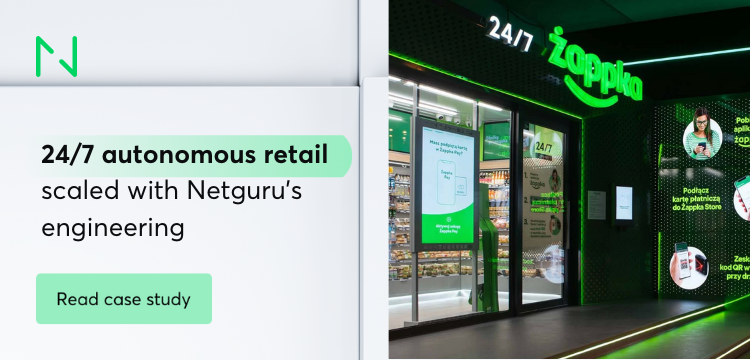Safer Online Shopping Experience: Tips for Ecommerce Owners

With a staggering 2.4 billion people engaging in online purchases, the risks of online fraud have skyrocketed. This necessitates a comprehensive approach to protect both customers and businesses from the detrimental consequences of cybercrimes.
With fraud, you’re losing twice
Running a safe e-commerce store is connected with various risks – a primary consideration is online fraud. Cyber crimes have become more pervasive and costly than ever. In 2020, global card fraud losses were estimated to exceed $35.54 billion globally. The consequences of online fraud hit both customers, who lose their money, and retailers, who must bear chargeback costs and payment fees, even when goods have been already shipped to the client.
Continue reading for some useful risk mitigation tips.
Anti-fraud process
The anti-fraud process allows the detection of fraudulent behaviors before the actual transaction is made. The goods aren’t sent from the owner’s stock, and the chargeback process doesn’t start as no payment is made.
Outsource the process to experts
The best solution for procedures requiring high competency in a specific area is to outsource them. Fraud detection is one of these processes. Think about using third-party fraud detection systems, designed by subject-matter experts.
When integrated with e-commerce platforms, these tools monitor clients’ actions through the whole customer journey, from account creation onward. Customer-related data such as payment methods, geolocation, and shipping addresses are analyzed, as well as shopping habits. In most cases, a machine learning engine supports the analysis. Then, a risk score is calculated and returned to the e-commerce system.
The online shop can automatically reject or accept the client’s purchase based on that score. In that way, an anomaly in client behavior protects the e-commerce owner from fraud before it happens.
Build knowledge within your team
Automatic transaction rejection may become a problem for the e-commerce owner. In these cases, consider creating a dedicated anti-fraud team, and configure the e-commerce cart process for manual review when applicable.
That can work in the following ways:
- For a high-risk score, the transaction automatically rejects
- For a low-risk score, the transaction automatically accepts
- For a medium risk score, the purchase is held for manual review
Anti-fraud departments should be available 24/7/365, because online shops are generally always open. The team is also responsible for reviewing confirmed fraud cases, tuning anti-fraud tool rules, and cooperating with payment system providers (PSP) and law enforcement.
Payment process
This is paramount to the online shop owner. Why? Accepting payment usually means purchased goods need to be shipped. The client’s payment history is the most important factor for judging whether the transaction is risky.
Outsource credit card transactions
Credit card number and data is one of the most crucial pieces of information used for fraud. Generated or stolen credit card numbers are sometimes enough to perform fraudulent transactions. Storing cardholder data internally creates additional risks of data leaks and internal frauds.
To spare the resources required to process credit card holder data internally, outsource to a third-party company.
The most convenient way? Choose an integration that redirects to your chosen third-party Payment Service Provider’s (PSP) paywall or an iframe HTML element from the PSP. By doing that, the ecommerce store doesn’t process any credit card holder’s data, meaning Payment Card Industry (PCI) requirements are minimized.
The best Payment Service Providers maintain a “referral list”. As well as highlighting fraudulent users, it also contains data on “friendly fraud” – customers performing fraudulent chargebacks after receiving goods purchased from an online shop. Ecommerce owners should utilize the list to reject transactions before payment is made.
Know Your Customer (KYC)
These guidelines outline processes to verify the identity, suitability, and risks involved with a customer. Detecting anomalies in clients’ behavior requires knowledge about historical transactions. That history is especially helpful when manual decisions about rejecting a transaction are required. It’s important to connect actions in online shopping to individuals, even when names aren’t known.
Connecting actions is easier to achieve when customers identify themselves by creating accounts and subsequently sign in, instead of buying as guests. The user experience must be designed to encourage that.
It’s worth keeping in mind that new customers, or those without a known shopping history, are riskier than returning clients.
As with other processes, it’s possible to outsource the KYC to third parties. Such solutions are usually chosen by regulated Fintech and credit cards companies, but there are KYC services dedicated to ecommerce.
Accounts protection process
Client accounts with transaction history are tasty morsels for fraudsters trying to attack online shops. For that reason, protecting client identity should sit high on the priority list, and also because of compliance requirements such as GDPR.
Implement data protection
Online shopping systems must provide adequate protection of customers' data. KYC requires the collection of personal data – the more individually identifiable information collected, the stronger the available data protection mechanisms.
Data encryption is also a good idea. Why? If there’s an ecommerce system database leak, the attacker can’t read and utilize clients’ personal information.
What else? The online shop should prevent brute force attacks on accounts, such as automated multiple login attempts. Outsourcing the authentication process to a third-party Identity Provider (IdP) is worth considering, too. By doing that, the IdP takes care of attacks connected with the sign-in process.
Encourage secure behaviors
Login and password are typically the only things protecting an online shop’s customer against account takeover and fraud. E-commerce owners should promote good practices regarding secure password creation and handling.
Currently, the most common way of taking over an account is by acquiring and using a list of leaked passwords. Online shops should check whether passwords are already known as leaked. In addition, they should use a password strengths meter, helping clients create safe passwords.
Secure e-commerce allows Multi-Factor Authentication (MFA) as an additional layer of account protection. One time codes generated by mobile applications, USB-connected physical U2F devices, or, as a last resort, one-time codes from mobile text-message or an email can all help protect against account takeover.
Note: If authentication is outsourced, MFA is provided by the external Identity Provider (IdP).
It’s also a good idea to educate online clients on how to recognize legit messages and phishing. Tell them which communication channels you use and your sender email address. You may want to digitally sign messages to clients and let them know how to verify.
Prepare a communication channel for reporting abuses such as phishing sites and scam emails, and react accordingly to incidents.
Vulnerability management process
Vulnerabilities in IT systems may be discovered at any time. To keep on top of potential issues, maintain the online shopping system and fix all vulnerabilities as soon as possible to prevent data theft and fraud.
The most impressive cyberattacks exploiting e-commerce vulnerabilities are assigned to the Magecart syndicate, specializing in violations involving digital credit card data.
Up-to-date e-commerce systems
Security issues with e-commerce systems are fixed by the provider during the support period. It’s important to keep online shopping platforms up to date, so when that period ends, upgrade IT systems, ensuring legacy, unmaintained code can’t process online transactions.
Periodical security tests
New vulnerabilities are uncovered in all IT system, so it’s advisable – and sometimes even a compliance requirement – to periodically measure the security of your online shopping system. Achieve that via security audits of code, infrastructure, processes, etc. Also, utilize simulated attacks – penetration tests – for that purpose.
Facilitating a safer online shopping experience
It’s vital for e-commerce owners to protect the clients as well as themselves from online frauds. From outsourcing processes and implementing procedures such as KYC to encouraging secure behaviors, there are a host of ways to make the online shopping experience safer. Where is your e-commerce business falling short in the safety department?



